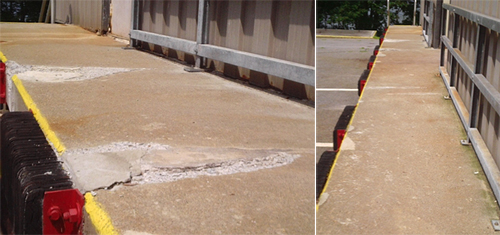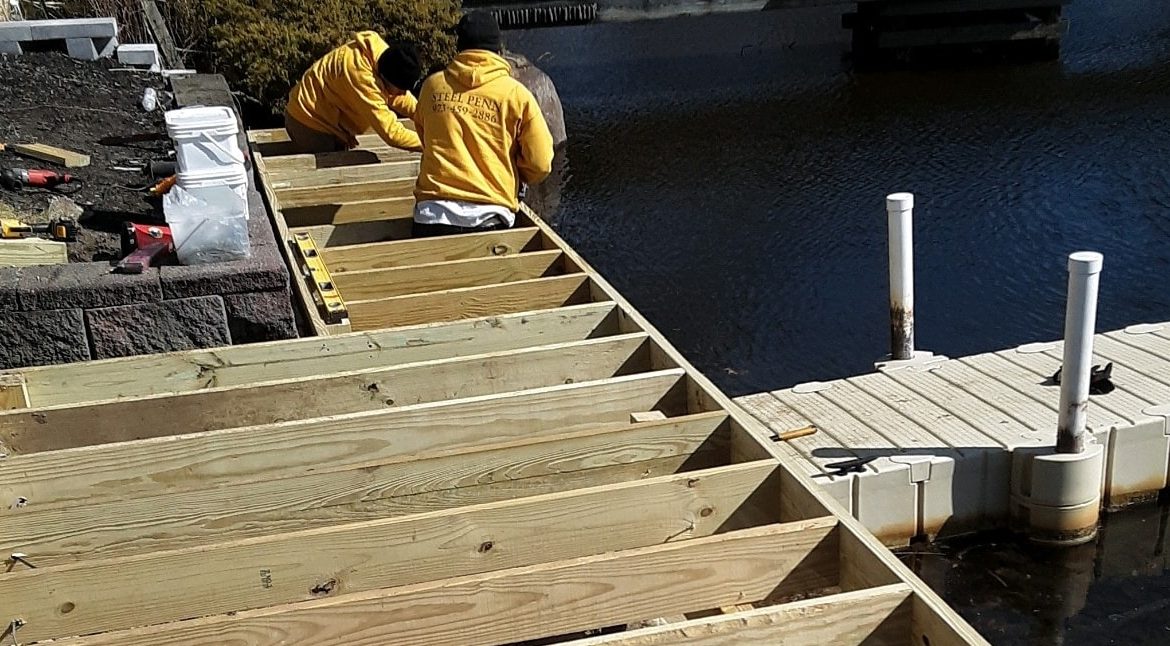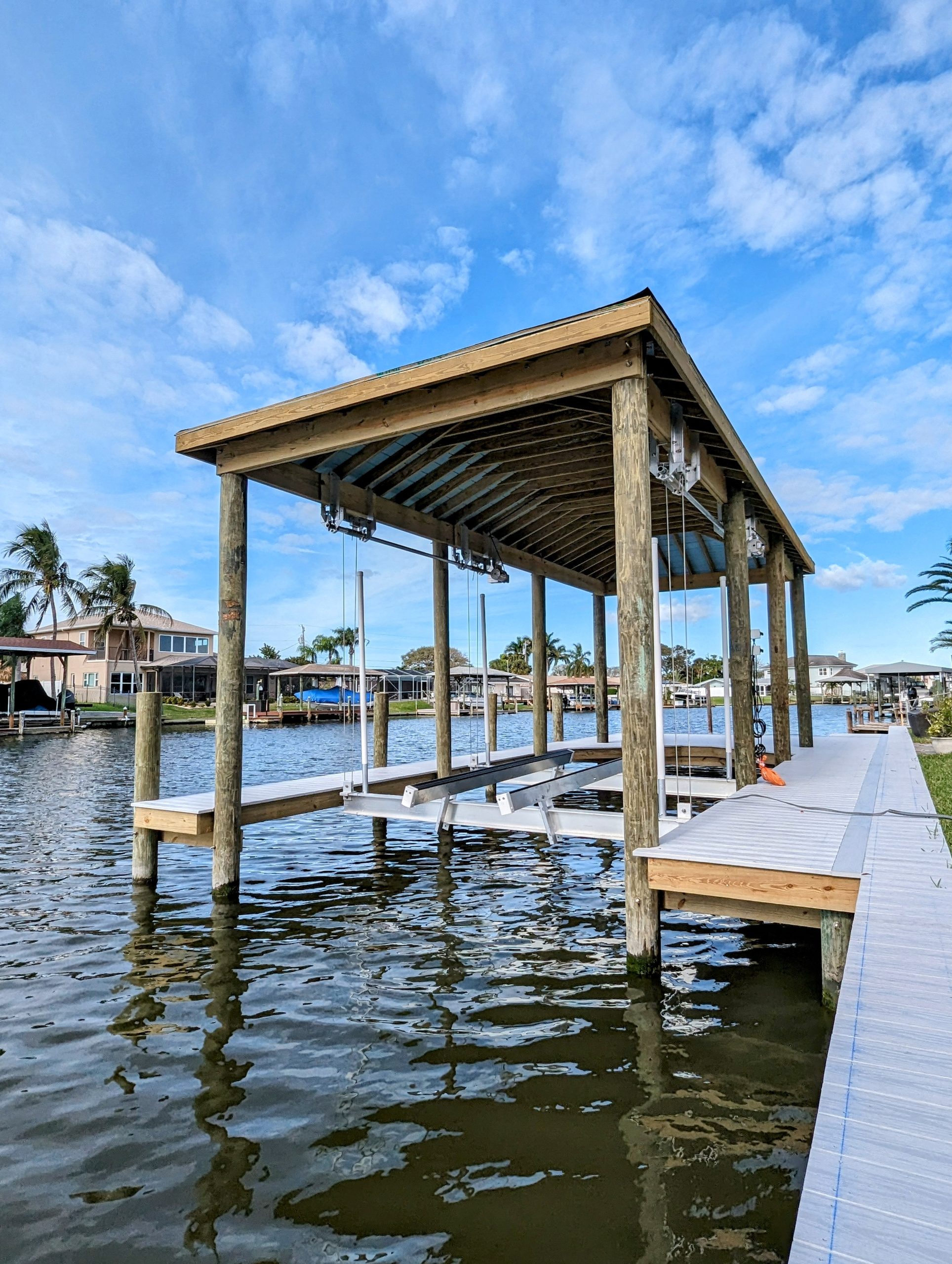Just How to Address Common Dock Fixing Issues for Safe Water Activities

Identifying Common Dock Issues
Identifying typical dock concerns is critical for maintaining the functionality and safety of your beachfront residential property. Regular evaluations can help reveal problems before they come to be severe, making sure both the longevity of the dock and the security of those who use it. One common issue is rusty or loose bolts. Gradually, screws, screws, and other bolts can end up being loosened as a result of consistent exposure to water and climate components, causing architectural instability.
Another usual trouble is the deterioration of flotation protection tools. These tools are necessary for keeping the dock resilient, and any damages or slits can trigger the dock to listing or sink. On a regular basis looking for leakages or water logged floats can preempt extra significant problems.
In addition, algae and barnacle buildup on the dock's surface area can produce slippery and hazardous problems. This biofouling not only poses a risk to users yet can also speed up the degeneration of the dock materials.
Lastly, evaluating for signs of rust on metal elements is necessary. Corrosion can compromise the integrity of the dock's structure, making it dangerous. By consistently determining these usual dock concerns, you can make certain that your dock continues to be practical and safe for many years ahead.
Fixing Rotting Timber
When resolving the issue of rotting wood on your dock, it is critical to act swiftly to stop further wear and tear. Begin by thoroughly examining the whole framework to identify all affected areas. Utilize a screwdriver to probe the wood; if it sinks in easily, the wood is most likely decomposed and needs instant interest.
Be certain to cut back to healthy and balanced, solid wood, ensuring you eliminate all jeopardized material. After removal, deal with the continuing to be timber with a timber chemical to stop future rot.
Following, replace the eliminated areas with marine-grade lumber or pressure-treated wood, which are more resistant to water damages. Protect the new pieces with galvanized or stainless-steel fasteners to avoid deterioration. Furthermore, using a waterproof sealant to the brand-new timber can offer an added layer of security.
Protecting Loosened Boards
Just how do you ensure your dock stays useful and secure for all its users? One critical aspect is safeguarding loose boards, which can otherwise posture significant threats. Loosened boards not only boost the risk of tripping yet can also compromise the structural stability of the entire dock.

For reinstallation, utilize stainless or galvanized steel screws, as these products supply remarkable resistance to corrosion in marine settings. Guarantee the screws are long sufficient to penetrate deep right into the underlying support structure, but not as long that they extend through the dock's surface. Pre-drilling pilot openings can aid prevent the wood from splitting.
Lastly, preserve a routine inspection timetable to identify and deal with any kind of new issues promptly. By protecting loose boards properly, you add to the total safety and security and durability of your dock, making it a trusted system for water activities.
Stabilizing Unstable Pilings
Guaranteeing the security of unsteady pilings is vital to preserving a risk-free and functional dock. Unstable pilings can endanger the entire structure, posturing substantial risks to customers and possibly leading to expensive repair work. The initial step in stabilizing these crucial parts is a thorough inspection. Analyze the pilings for indications of rot, damage, or moving. Use a level to inspect for vertical alignment and guarantee they are driven deep sufficient right into the substrate to provide appropriate support.
If the pilings are located to be unstable, one effective technique for support is the usage of additional supporting. Cross-bracing with treated lumber or galvanized steel can significantly boost stability. Support the braces safely to both the pilings and the dock framework to disperse loads uniformly.

Regular maintenance and routine review of the pilings' security are crucial to making certain long-term dock safety and security and capability.
Changing Rusty Hardware
Dealing with unstable pilings is just one facet of keeping a dock's stability; one more essential problem is replacing rustic equipment. In time, exposure to dampness and salt can result in the oxidation and deterioration of braces, bolts, and screws, endangering the whole structure's security. Routine inspection for corrosion is essential, especially after extreme weather pop over here or seasonal modifications.
When corroded hardware is determined, prompt action is needed. Begin by picking marine-grade stainless steel or galvanized equipment, both designed to resist the harsh marine environment. Guarantee that you have the ideal devices, such as wrenches and screwdrivers, to safely eliminate the old, corroded items without causing additional damage to the dock.
After removing the corroded hardware, thoroughly clean the influenced areas to remove any kind of residual corrosion or debris. Apply a rust-inhibiting guide to subjected metal surfaces prior to installing the brand-new hardware. Tighten all fixtures firmly to avoid future loosening, and periodically inspect the installations to ensure continuous security.
Replacing corroded equipment not just prolongs the dock's life expectancy yet likewise substantially enhances the safety of water tasks. By proactively taking care of corrosion, you safeguard both the framework and its users, making sure a delightful and safe waterfront experience.
Verdict
Regular inspections and maintenance are important to resolve common dock repair work problems and ensure risk-free water activities. By determining and treating issues such as deteriorating timber, loose boards, unstable pilings, and corroded hardware, structural security and long life can be considerably enhanced. The application of appropriate therapies and marine-grade materials further strengthens the dock against ecological stress factors. Such aggressive procedures add to the total security and capability of dock frameworks, fostering a protected atmosphere for water-based activities.
Guaranteeing the safety and security of water tasks hinges substantially on the appropriate upkeep and repair work of docks (Dock Repairs). These devices are necessary for maintaining the dock buoyant, and any kind of damages or punctures can trigger the dock to list or sink. By routinely identifying these common dock problems, you can ensure that your dock stays protected and practical for years to come
Guaranteeing the security of unstable pilings is critical to keeping a practical and safe dock.Normal evaluations and maintenance are necessary to attend to see it here common dock repair service problems and ensure safe water activities.